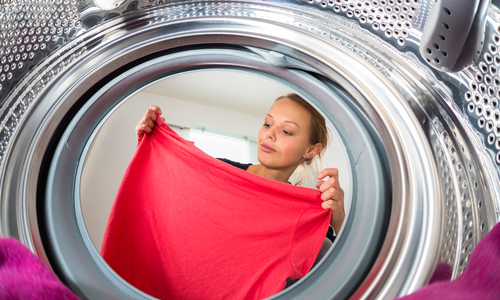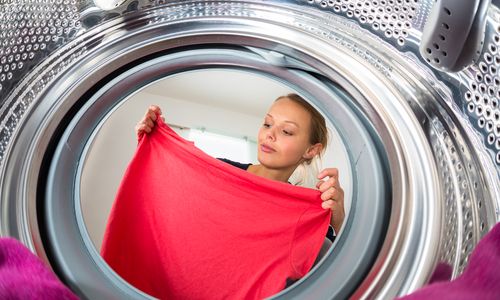
7 Green Ways to Ditch That Static Cling Without Resorting to Toxic Dryer Sheets

Looking for a more environmentally-friendly laundry routine, but can’t find a good way to reduce static cling without using dryer sheets?
Photo courtesy of Shutterstock
Separating oneself from these sheets, which are made with a dangerous assortment of carcinogenic chemicals, is not easy. Luckily, there are simple green alternatives that work just as well.
According to diy Natural, here are seven natural ways to reduce static in the laundry:
1. Hang Dry
The best natural way to eliminate static in laundry is to hang dry everything. Now that spring is approaching, it should be a little easier for most to take advantage of drying clothes outdoors or in front of an open window. When hung to dry, clothes are no longer rubbing together to create static electricity.
Whether hanging it outdoors or indoors, there are several options. Laundry enthusiasts can build their own outdoor clothesline, use a compact outdoor model that folds up (and can be taken out of the ground) when not in use or dry indoors using a large rack or a smaller model.
When hang drying isn’t an option and a dryer must be used, there are still several natural methods for keeping static down.
2. Dry Synthetic Fabrics Separately
Synthetic fabrics like nylon and polyester are one of the main culprits of static cling. When dried separately, garments made from synthetic fabrics aren’t given the opportunity to charge up all the other clothing. Consider pulling synthetic fabrics out of the wash and hanging them on an indoor or outdoor rack instead of throwing them in the dryer with everything else.
3. Reduce Drying Time
Another common cause of static in the laundry is over-drying. When items are completely dry and no moisture remains, this invites static electricity into the mix. Allow clothes to dry only until they’re not wet anymore—tumbling around for excessive amounts of time in the dry heat increases static and increases energy costs.
4. Vinegar Fabric Softener
Diy Natural’s homemade fabric softener is made with vinegar. It actually serves double duty as fabric softener and static reducer in the laundry. When used in the rinse cycle of the wash, most users will see a reduction in static cling after clothes go through the dryer. Even if planning to hang dry items, there’s no need to worry about them smelling like vinegar. When items are completely dry the vinegar smell will completely vanish.
5. Wool Dryer Balls
Wool dryer balls are an excellent alternative to fabric softeners and dryer sheets. These little wool balls absorb moisture from clothing in the dryer, maintaining a more humid environment and, therefore, cutting down on static.
In addition to reducing static, they also reduce drying time and fluff clothes. Diy Natural recommends using six or more in the dryer for best results.
6. Vinegar in the Dryer
Using white vinegar in the dryer is another great trick for eliminating static. Simply spray a clean washcloth, sock, pre-cut piece of cloth or any other garment with vinegar. This item is then tossed into the dryer with everything else. The vinegar in the dryer will keep static down—and remember, the vinegar smell will be gone once things are dry.
7. Soap Nuts
Soap nuts can be used as a green alternative to commercial laundry detergents. They’re actually a type of berry, and can be put in a muslin bag and tossed directly into the wash. (They can also be boiled down to make a liquid laundry soap). They already possess anti-static properties, so laundry that’s washed with soap nuts doesn’t require any other anti-static remedy.
Visit EcoWatch’s HEALTH and pages for more related news on this topic.


 233k
233k  41k
41k  Subscribe
Subscribe 
